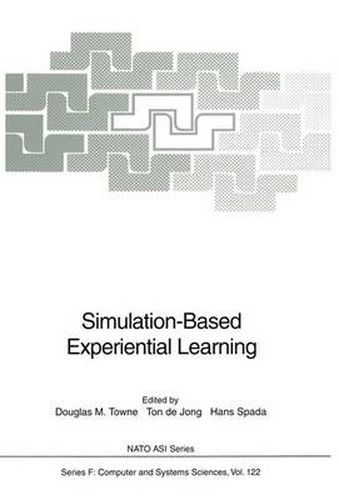Readings Newsletter
Become a Readings Member to make your shopping experience even easier.
Sign in or sign up for free!
You’re not far away from qualifying for FREE standard shipping within Australia
You’ve qualified for FREE standard shipping within Australia
The cart is loading…






This title is printed to order. This book may have been self-published. If so, we cannot guarantee the quality of the content. In the main most books will have gone through the editing process however some may not. We therefore suggest that you be aware of this before ordering this book. If in doubt check either the author or publisher’s details as we are unable to accept any returns unless they are faulty. Please contact us if you have any questions.
In October of 1992 an assembly of researchers in simulation and computer models for instruction convened in Bonas, France, to learn from one another in a non-automated environment. The event was the Advanced Research Workshop entitled The Use of Computer Models for Explication, Analysis, and Experiential Learning. Sponsored by the Scientific Affairs Division of NATO, this workshop brought together 29 leading experts in the field loosely described as instruction and learning in simulation environments. The three-day workshop was organized in a manner to maximize exchange of knowledge, of beliefs, and of issues. The participants came from six countries with experiences to share, with opinions to voice, and with questions to explore. Starting some weeks prior to the workshop, the exchange included presentation of the scientific papers, discussions immediately following each presentation, and informal discussions outside the scheduled meeting times. Naturally, the character and content of the workshop was determined by the backgrounds and interests of the participants. One objective in drawing together these particular specialists was to achieve a congress with coherent diversity, i.e., we sought individuals who could view an emerging area from different perspectives yet had produced work of interest to many. Major topic areas included theories of instruction being developed or tested, use of multiple domain models to enhance understanding, experiential learning environments, modelling diagnostic environments, tools for authoring complex models, and case studies from industry.
$9.00 standard shipping within Australia
FREE standard shipping within Australia for orders over $100.00
Express & International shipping calculated at checkout
This title is printed to order. This book may have been self-published. If so, we cannot guarantee the quality of the content. In the main most books will have gone through the editing process however some may not. We therefore suggest that you be aware of this before ordering this book. If in doubt check either the author or publisher’s details as we are unable to accept any returns unless they are faulty. Please contact us if you have any questions.
In October of 1992 an assembly of researchers in simulation and computer models for instruction convened in Bonas, France, to learn from one another in a non-automated environment. The event was the Advanced Research Workshop entitled The Use of Computer Models for Explication, Analysis, and Experiential Learning. Sponsored by the Scientific Affairs Division of NATO, this workshop brought together 29 leading experts in the field loosely described as instruction and learning in simulation environments. The three-day workshop was organized in a manner to maximize exchange of knowledge, of beliefs, and of issues. The participants came from six countries with experiences to share, with opinions to voice, and with questions to explore. Starting some weeks prior to the workshop, the exchange included presentation of the scientific papers, discussions immediately following each presentation, and informal discussions outside the scheduled meeting times. Naturally, the character and content of the workshop was determined by the backgrounds and interests of the participants. One objective in drawing together these particular specialists was to achieve a congress with coherent diversity, i.e., we sought individuals who could view an emerging area from different perspectives yet had produced work of interest to many. Major topic areas included theories of instruction being developed or tested, use of multiple domain models to enhance understanding, experiential learning environments, modelling diagnostic environments, tools for authoring complex models, and case studies from industry.